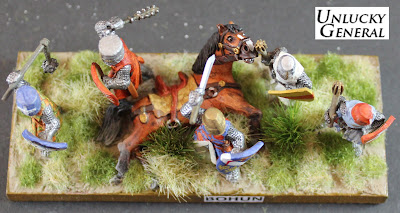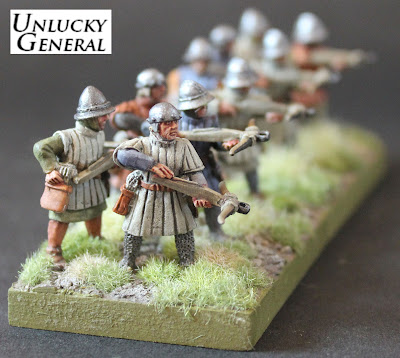Progress on the Table-top
I seem to have gotten a move on finally and once started am now under-way once more as you can see from the drive-way production line. These panels have been stacked on a shelf under covers for the past year-and-a-half and now are seeing the light of day. I am learning much as I go with my air-compressor and spray gun but to be honest, it's really quite straight forward though not simple. I am having much more success with this large equipment than I ever had with an air-brush - fiddly bloody things.
One of my first observations is how the synthetic fur alters even after the first coat of acrylic paint. I probably could have gone for house paint - cheaper and with greater volume - but went for the matte fluid acrylic craft paints to be on the safe side for my first attempt. Even with the thinnest of coats, the acrylic tones right down to a khaki and stiffens considerably. Any ideas I might have had about flossy, springy grass has been dispelled. There will be some elasticity and it does tolerate gentle brushing (hair brush) but the silky, smoothness is not able to be retained; only dyes might achieve that. It will pack down and recover with metal figures on it which is all I want it to do but the properties of the fur at the beginning are not those of the end result.
I adopted the recommended, even horizontal spray technique as if I were spraying a wall or a car and kept my nozzle spray pattern set to a vertical line.I held the nozzle only about ten centimetres from the fur and kept a fair pressure up to penetrate the thicker fur areas being sure to moderate my paint flow. It pays to brush the fur or tease it as close to standing or vertical as possible to assist penetrative coverage. I think it better to err on less, rather than more paint in the flow and just go back over the fur a few times to avoid droplets forming. Spraying back and forth I worked from bottom to top and them back down again for the first coat using Jo Sonja's Green Oxide mixed to a milky thickness, thinning with water. Allowing time to dry, I returned to the panels being sure to upend them so as to spray from a different direction, working bottom to top and rotating again before working again from top to bottom. In all, each area of the naked synthetic fur received four passes with the base coat of Green Oxide (darker green).
For me, penetration of the fur with sufficient paint is important. The original choice of camel coloured fur is essential to get that brown roots effect. I've seen some attempts at painting fur which failed to properly colour to a sufficient depth which left me cold on the results. Once dry, I got back to them with the top coat of Sap Green. I am going for a high summer, bright green fields effect for the Lewes Downs and I think the texturing in ever lightening levels is essential for a realistic effect with depth. When applying this coat (two actually) I was deliberately less even handed and hit the panels from about a 30 degree angle - much more obliquely. I want the lighter grass to lay on top, with the dark shades beneath and roots at the base. I have a further lighter green to add but will apply that even more sparingly and using a dry brush application.
Hopefully this last image is starting to show what I'm aiming for. Before I even think about applying yellow and blue flower brush strokes (by no means a certainty) I'll colour the tracks and the heavy traffic areas with pale earths and much grey and whites for the chalk. All up, once under way all six 3'x3' panels took me a total of 3-4 hours thus far with the spray gun.
One of my first observations is how the synthetic fur alters even after the first coat of acrylic paint. I probably could have gone for house paint - cheaper and with greater volume - but went for the matte fluid acrylic craft paints to be on the safe side for my first attempt. Even with the thinnest of coats, the acrylic tones right down to a khaki and stiffens considerably. Any ideas I might have had about flossy, springy grass has been dispelled. There will be some elasticity and it does tolerate gentle brushing (hair brush) but the silky, smoothness is not able to be retained; only dyes might achieve that. It will pack down and recover with metal figures on it which is all I want it to do but the properties of the fur at the beginning are not those of the end result.
 |
| Spraying across a vertical surface |
I adopted the recommended, even horizontal spray technique as if I were spraying a wall or a car and kept my nozzle spray pattern set to a vertical line.I held the nozzle only about ten centimetres from the fur and kept a fair pressure up to penetrate the thicker fur areas being sure to moderate my paint flow. It pays to brush the fur or tease it as close to standing or vertical as possible to assist penetrative coverage. I think it better to err on less, rather than more paint in the flow and just go back over the fur a few times to avoid droplets forming. Spraying back and forth I worked from bottom to top and them back down again for the first coat using Jo Sonja's Green Oxide mixed to a milky thickness, thinning with water. Allowing time to dry, I returned to the panels being sure to upend them so as to spray from a different direction, working bottom to top and rotating again before working again from top to bottom. In all, each area of the naked synthetic fur received four passes with the base coat of Green Oxide (darker green).
 |
| Green Oxide base coat (left) and the Sap Green top coat (right) |
Hopefully this last image is starting to show what I'm aiming for. Before I even think about applying yellow and blue flower brush strokes (by no means a certainty) I'll colour the tracks and the heavy traffic areas with pale earths and much grey and whites for the chalk. All up, once under way all six 3'x3' panels took me a total of 3-4 hours thus far with the spray gun.





Comments